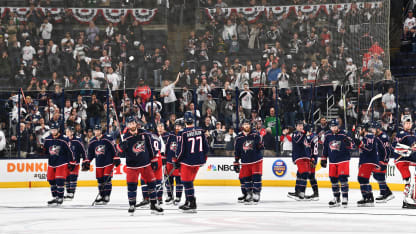The Columbus Blue Jackets were in position to win a Stanley Cup Playoff series for the first time heading home after two overtime wins at the Washington Capitals in the Eastern Conference First Round.
But the euphoria turned into another spring of disappointment when the Capitals won the next four games, including Game 3 in double overtime and Game 5 in overtime, to eliminate the Blue Jackets in six.
Blue Jackets hurt by lack of killer instinct against Capitals in playoffs
Inability to finish, subpar special teams, goaltending led to elimination

© Jamie Sabau/Getty Images

















